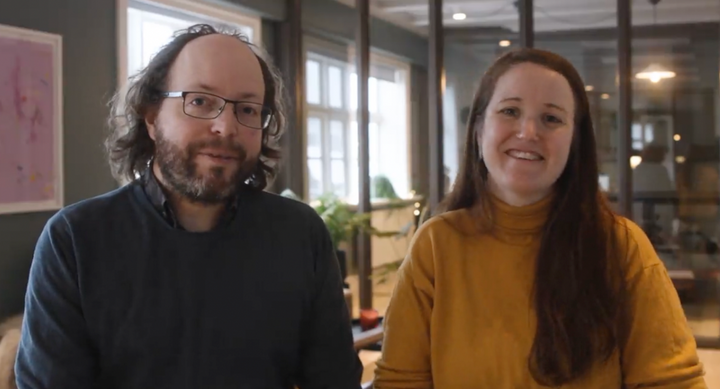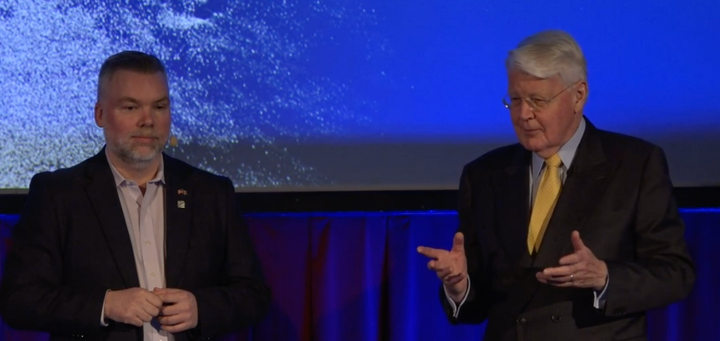Sling’s First Year in America: Lessons From an Icelandic Startup
Through the years, companies — not only tech startups — have grossly underestimated the cost of selling and developing businesses outside of their home market.
So a year ago, when a small Icelandic tech company, Gangverk, decided to start investing in sales and business development by opening an office in New York City, it was (and still is) risky business. Worse yet, the software product we aimed at launching and selling wasn’t ready and had no users.

The idea we had in opening an office in New York was to investigate if there was a real market for a SaaS product we were developing called Sling, http://www.getsling.com, find helpful American beta test customers for feedback, create go-to market partnerships, and start a dialogue with possible future investors. Basically: research the market and build contacts that would benefit our business.
So we went from one office in Reykjavik, Iceland to also having an office on Broadway in New York City (to be fully accurate, rented desks inside a co-op space).
We believe you need to sit at the table and have a presence in America to be taken seriously there, and we want to share our experiences from our first year in New York if somebody can learn from it.
Woody Allen says “80% of success is showing up.” Let’s hope he’s right.
So what is Sling?
Sling is a SaaS (Software as a Service) workplace communication and shift scheduling software for non-desk working industries. It’s super simple to set up and use. You go to www.getsling.com, create an account, and invite your employees to join. Boom: in two minutes you’ve got your own company intranet. It’s available both on the web and as iOS and Android apps.
From day one of developing Sling, before we wrote the first line of code, we’ve been in touch with potential users and customers, trying to gather as much feedback and input as possible.

Sling was released in Beta tests with selected restaurant and retail store customers in March 2015, and we dropped Beta in July.
Everybody we meet loves the concept of Sling, but it’s our goal and challenge to get them to love the product Sling. There’s a great difference between the two.
Our product team is busy every day, tweaking things and listening to ever increasing customer feedback coming from all over the US. Although Sling’s focus industries are retail stores and restaurants, we serve a variety of businesses including coffee houses, bars, hospitals, hotels, security companies, call centers, music venues, zoos and more.
So how has the first year in America been?
We’ve generally felt very welcome in New York, but we found out quickly that nobody in Manhattan was waiting for us or for a new SaaS software communication solution to hit the market. That doesn’t mean people don’t need such a product or love the concept. But getting customers to commit to and actually start using the product hasn’t been easy. The main trouble is getting the decision makers’ attention and time. The hurdle after they say yes is to get the entire company on board and up and running making full use of Sling. The second part can be as tricky as the first one.

It seems that in America everybody is selling something. Because of this, managers with decision power create a strong force field around themselves that won’t let new sales teams in. To overcome this bias, we’ve had to write endless emails and make many, many cold calls to get attention and meetings. These are all well-known sales difficulties, so in a sense, it’s nothing new, but for a small company coming from a tiny market (Iceland is 1000x smaller than US in all economic aspects), it’s hard.
As the year has gone by, we’ve developed Sling quickly in response to customer feedback, and it’s become easier to manage as we go. We’re in touch with a growing potential customer base and go-to market partners, whom we make sure are following our progress. Progress matters also to our American customers, who credit us for our efforts. If you’re honest, polite, and make sure not to close any doors, you can always come back in 3-6 months with an update and try to pitch the sale again. The American dream in this sense is alive and well.
Some advice: be yourself, or at least don’t strive to be an overcommitted, fast-talking “sales guy” (you know the type). Your customers know what you’re trying to do is difficult and respect you for your efforts, so speak the truth. Honesty goes a long way.
Time is the worst enemy of startups, but you have to stay in the game to build trust and connections and keep your head high. If you’re feeling down, listen to Whiskey in the Jar by Metallica and Thunderstruck by AC/DC before meetings. Try to keep your energy up, drink a lot of water, and get enough sleep. And please, stay away from junk food.
In America, it’s all about the intro. If somebody makes an introduction, you’ll get the meeting and attention, so a good network is gold. Well-respected managers and brand names can do wonders in getting you in front of potential new customers and partners. Ask people for help – you’ll be surprised how helpful good people are.

Being in New York has also helped us better understand how Americans do business in general and build up our contact list. It is a fact that software decision making is splitting into the hands of different mangers and divisions and away from one central CTO buying office. From our vantage, we can tell you that department heads within large hospitals in California and Georgia autonomously found Sling and implemented its use. The same likely happened when airport baggage handlers of one of the major airlines started using Sling. I’m pretty sure they didn’t call headquarters for feedback
With the fast evolving software world poking around in every business model on earth and trying to find ways to take over “conventional” companies’ business and revenue streams, there’s a changing attitude inside huge companies toward cooperation of smaller companies and teams. They know that they have to take part in the Zeitgeist or become Kodak in 10 years.
In the past months, Sling has signed on hundreds of company accounts in America with many great customers. Software products are sold online all the time without companies meeting face-to-face, and the same is true for Sling. We’ve never met 25 of our 30 biggest users. We’ve chatted with some on Skype, asking for feedback after they started using Sling, but some have never replied to our emails or calls, which is fine.
How much has this sales and business development cost us?
New York is an expensive place to be, and it might not be the best fit for your company, especially if you’re trying new things and exploring what works for your product.
The total sales/business dev. cost of our first year (besides salaries, which would have been the same if we worked out of Iceland) has been around $140,000. We’ve spent this money on rent, travel, a variety of testing sales related activities, a tiny budget on Adwords (which works well) and Facebook ads (which didn’t work so well — if anybody knows how to do it right, please contact me). We’ve also tested content marketing with mixed results, hired a sales intern (didn’t work), hired an expensive fast talking sales advisor/consultant (mixed results at best) and hired a part time PR guy (didn’t work). We attended the big NRA restaurant trade show in Chicago in May last year (which worked very well, it cost about $15,000) – see the photo below of our booth (we played a bit out of our league, as we where surrounded by big tech companies).

We benefited from this conference with a couple of great partnerships and sale – for example, US Foods where our company is partnering with an 22,000-person organization with deep roots inside the restaurant industry. We also made first contact with the company that licensed Sling for $2.5m early this year at this conference. In a perfect world, we’d attend all key trade shows every year, but it’s expensive.
We got a buy offer for our company last year, to which we said “no thanks!” (we’re having too much fun). It ultimately strengthens our belief that we’re doing something right, even though we can’t see into the future and might regret it greatly later ahaha.
We’ve found out that good sales people in America with the right connections are very expensive.
We had the opportunity to speak at a cool tech conference with big names from the restaurant industry. This taught me that I need to take public speaking classes as it seems to me that all Americans can rock the stage as if they were giving a TED talk!
We’ve learned that it takes time to convince big brands names to work with us but it is possible and it is often not easy to find the right person to talk to inside big corporations.
So what happens next?
We have a rock solid product, that our current customers love (they send us “I love Sling” emails) and has the potential for continued growth in a variety of industries around the world. But it doesn’t matter if we don’t have the resources to keep on going, to be able to hire more smart people, and test things out in order to keep moving forward every day.

I’m endlessly fortunate to be backed by the best tech team in the business, all of them much smarter than me. I feel the responsibility and pressure to deliver as the company is investing in me being in New York. Nothing beats the feeling of going into a product demo with a customer knowing we have a fantastic product they will like and use. And the true drug of selling is doing live product development with my team in Iceland in front of a customer in New York – it’s pure magic.
We received $500,000 in pre-seed funding from two investors based on the concept and idea of Sling. When I look at our old investor deck today, I can’t believe what they were thinking. It’s a shadow of what our product has turned out to be.
Our investors are pressing us to spend fast (the American way!), but we’re trying to make the money last as everything takes longer than expected, and we have to be able to stay in the game. Our funds will last until next year, though our dinners for the last months might be mac and cheese. But, hey, we shouldn’t complain. We’re the fortunate few who get the chance to take risks.
Atli, my partner and world’s best CTO likes to say, “Make it happen.” I agree — we have to keep a razor-sharp focus and move forward every day, making every moment count as our window of opportunity closes.
If you’re still reading this, thank you for your time, and please find us in New York or Reykjavik for a chat over coffee.
Helgi Hermannsson is founder and CEO of Sling, a SaaS workplace communication and shift scheduling software for non-desk working industries. If you have questions or thoughts, reach out to him through email – helgi@getsling.com.




